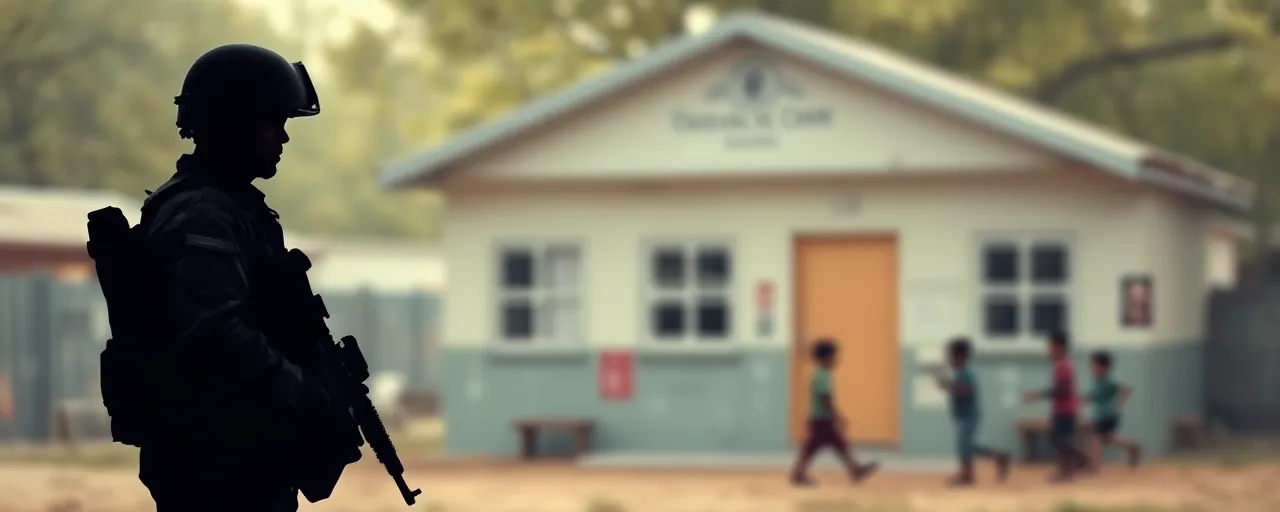A Call From Capitol Hill
The hearing room buzzed with tension on April 8, 2025, as top enlisted leaders from the Air Force and Space Force faced lawmakers. Chief Master Sgt. David Flosi and Chief Master Sgt. John Bentivegna laid bare the struggles of service members, from crumbling dorms to childcare waitlists that stretch months. Their testimony before the House Committee on Appropriations painted a stark picture: budget constraints are hitting military families hard, and the ripple effects could weaken national defense.
This wasn’t just another routine briefing. The stakes felt real, urgent even, as the two leaders spoke about Airmen and Guardians juggling global missions with personal hardships. Flosi, representing over 670,000 Air Force personnel, stressed that quality of life isn’t a luxury, it’s a necessity for keeping troops focused. Bentivegna echoed that sentiment, pointing to the Space Force’s outsized role in security despite its lean budget. Both made it clear, the system’s fraying at the edges.
Housing and Childcare Woes Hit Home
For many service members, finding a decent place to live is a battle in itself. Rising rents and outdated housing allowances leave junior enlisted families scrambling in cutthroat civilian markets. Flosi highlighted how the Basic Allowance for Housing lags behind soaring costs, a problem backed by a recent Government Accountability Office report slamming the Pentagon’s sluggish market assessments. At bases like Naval Air Station Key West, short-term rentals snap up what little’s available, leaving troops high and dry.
Childcare’s another sore spot. With wait times stretching up to 18 months at some bases, families are stuck. Staffing shortages have shuttered centers, like at Hill Air Force Base, while high costs chew through paychecks, averaging 15.4% of income. Bentivegna called it a readiness issue, plain and simple, when parents can’t work or deploy because they’re tethered to home. Efforts like off-base care contracts show promise, but they’re a bandage on a gaping wound.
The Push to Shed Old Weight
Flosi didn’t mince words about the Air Force’s bloated footprint. Over three decades, fighter squadrons dropped by 60% and personnel by 40%, yet only 15% of bases closed. He argued that 30% of infrastructure’s just dead weight, draining cash that could fix dorms or boost pay. Demolishing it’s costly upfront, but Flosi pegged the return at tenfold over time, a rare chance to redirect funds where they’re needed most.
Historical echoes back this up. The Base Realignment and Closure process since 1988 trimmed over 350 sites, saving billions yearly. Today’s Air Force plans to ditch 250 aircraft in 2025 alone, aiming to bankroll cutting-edge tech. But with defense spending capped tight under the Fiscal Responsibility Act, every dollar’s a tug-of-war between modern gear and family support. Lawmakers nodded along, but the math’s still a puzzle.
Space Force Feels the Squeeze Too
Bentivegna brought a different angle, spotlighting the Space Force’s unique bind. Guardians track 47,800 objects in orbit and fend off missile threats, all on a sliver, just 3%, of the defense budget. He pushed for more training and development, arguing that skimping on people risks the mission. Operating under stopgap funding for half its existence hasn’t helped, stalling growth when rivals like China loom larger in space.
Both leaders agreed on one thing, investing in troops pays off. Bentivegna’s “Elevate the Journey” pitch for Guardians mirrors Flosi’s call for Airmen, a nod to the 14th Quadrennial Review’s push for better compensation and support. Committee members from both parties seemed receptive, hinting at bipartisan backing as Congress hashes out the 2025 budget. Still, no one’s betting on quick fixes.
What’s at Stake
The testimony laid out a brutal truth, readiness hinges on people, not just planes or satellites. Flosi recounted Airmen thwarting Iranian drones and Houthi attacks, feats that demand focus, not distraction from leaky roofs or empty childcare slots. Bentivegna tied it to national security, noting space’s role in everything from GPS to missile warnings. Skimp on quality of life, and the whole machine starts to sputter.
Lawmakers left with plenty to chew on. The Air Force faces $14 billion in potential cuts, and infrastructure spending’s set to dip from $17.5 billion to $16 billion by 2029. Families lose up to $1 billion yearly from spouse unemployment, a stat that stings when 21% can’t find work. The fixes aren’t cheap, but neither is a force stretched too thin. As budget talks heat up, the clock’s ticking to strike a balance.
